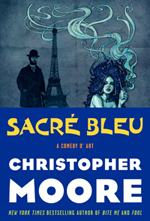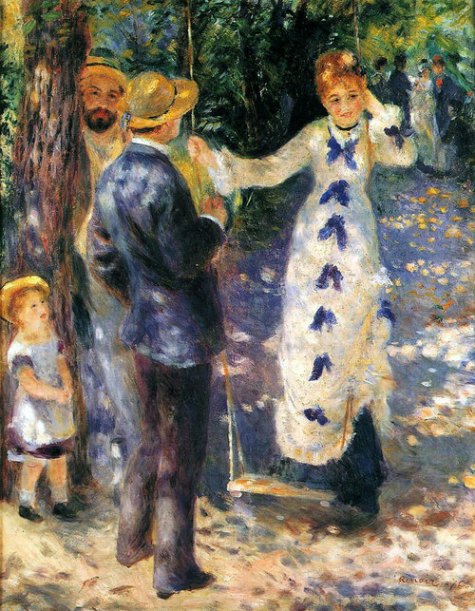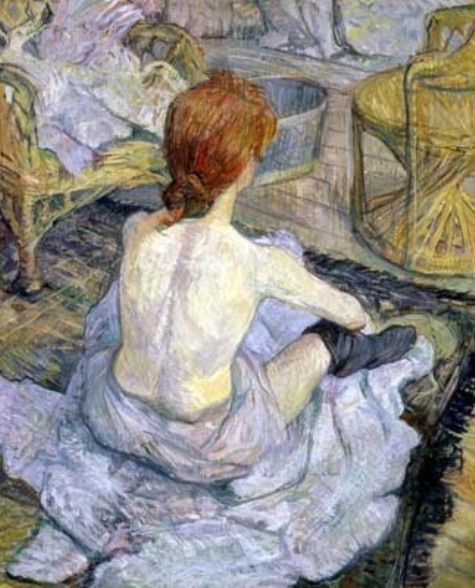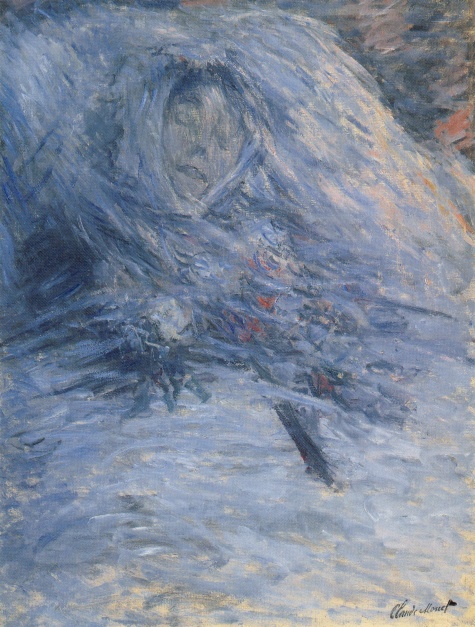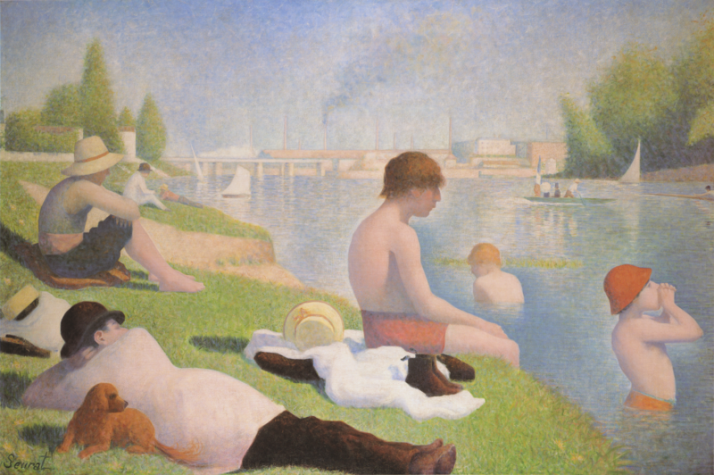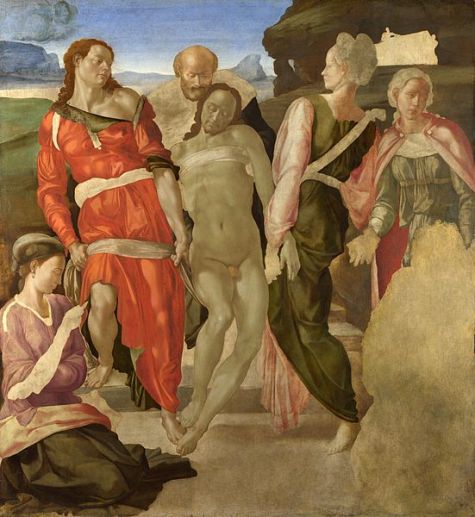Recently I managed to get my hands on an advance copy of Christopher Moore’s newest book, Sacré Bleu. This auspicious event was followed by two days of ravenous reading, skipped meals, and neglected chores. Christopher Moore, the author who has brought us absurdly funny stories about Jesus Christ, vampires, and sassy whales, has cannonballed into the pool of art history–and has made a huge splash!
When asked about the origin of his latest novel, Moore says, “I simply set out to write a novel about the color blue.” This desire brought him to Paris, London, and Italy, where “it turns out they keep a lot of the art discussed in this book.” The novel opens as the tragic news of Vincent van Gogh’s death reaches Paris. His friends, Henri Toulouse-Lautrec and Lucien Lessard, set out to solve the mystery of Vincent’s death after receiving this warning from him:
“P.S. If you see the Colorman, run. Run. You are too talented and too delicate of constitution to endure, I think. I am not mad. I promise.”
–Vincent
To solve the murder, Lucien and Henri will have to hunt down this twisted little Colorman who has a penchant for ultramarine blue. They will find love, heartbreak, forgotten memories, and, ahem, some girls in Moulin Rouge. Ultimately they will uncover the secret of the Colorman and the ordained powers he gets from Sacré Bleu, but not before having a little bit of fun with their impressionist friends.
Here are some examples of uses of Sacré Bleu from Christopher Moore’s novel. Throughout the story, each of these artists is visited by the manipulative Colorman.
Sacré Bleu, the “sacred blue,” the truest blue, was at the time the most expensive paint in history. It was extremely difficult to obtain. First, colormen would need the gemstone lapis lazuli, which, for centuries, was more rare and more valuable than gold. On top of that, lapis lazuli is only found in one place in the world, the mountains of Afghanistan–a world away from Europe! Why go to all this trouble to make a little bit of blue paint? Because the pigment derived from lapis lazuli creates the most spectacular, everlasting, ultramarine blue. It does not fade over time or blacken with age like some other blue paints. This quality of ultramarine blue, as well as the significant sacrifice one had to make to obtain it, made it the perfect color to reserve for the Blessed Virgin, the mother of Christ. In many religious scenes, Mary is seen wearing a Sacré Bleu gown.
Although he spends most of his time haunting the impressionists in Montmartre, the Colorman does make his way back to 16th-century Italy to visit the masters of the Renaissance. In this example, it appears as though Michelangelo’s The Entombment remains unfinished because he was unable to obtain the ultramarine paint he needed to finish the figure of the Virgin Mary. Of course in reality this is probably due to the high cost of the paint, but in Sacré Bleu, it is a mystery that is waiting to be solved by you!
Christopher Moore will discuss his new book as part of the Arts & Letters Live program at the Dallas Museum of Art on Tuesday, April 1o, at 7:30 p.m. For more information and tickets to this event, visit our website. The DMA’s Museum Store is selling first-edition copies of Sacre Bleu, with beautiful color illustrations of the art discussed in the novel.
Hayley Dyer is the Audience Relations Coordinator for Programming at the Dallas Museum of Art.
